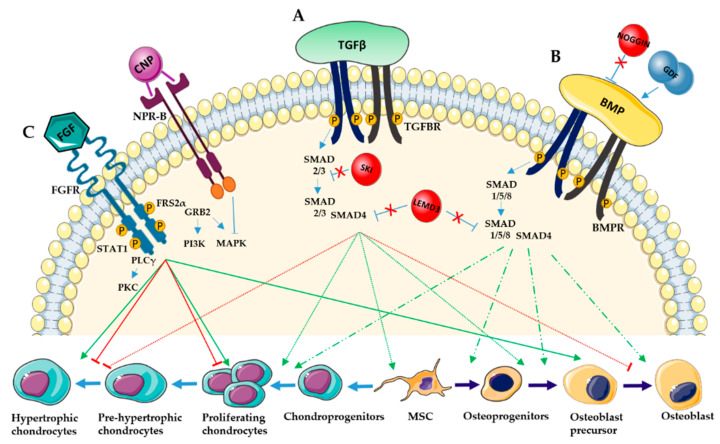Figure 3.
TGFβ, BMP and FGF signaling pathways in chondrocyte and osteoblast differentiation. (A) TGF-β ligands bind to TGFBR type 1 and 2 causing the phosphorylation of the receptors and of SMAD 2 and 3 proteins which interact with SMAD4. This complex accumulates in the nucleus and induces chondrogenesis and osteoblastogenesis but inhibits the last step of chondrocyte and osteoblast maturation. SMAD activity can be blocked by intracellular inhibitors like SKI and LEMD3. (B) BMP ligands bind to BMPR type 1 and 2 causing the phosphorylation of the receptors and of SMAD 1, 5 and 8 proteins which interact with SMAD4. This complex accumulates in the nucleus and induces chondrocyte proliferation and all the steps of osteoblast differentiation. GDF ligands and the NOGGIN antagonist also bind BMPR. (C) FGF ligands bind FGFR causing receptor transphosphorylation, the phosphorylation of the adaptor protein FRS2α and the activation of STAT1, PLCγ and GRB2. GRB2 in turn activates PI3K and MAPK proteins. Through these pathways, FGF promotes chondrocyte proliferation and differentiation in the first step of the development and it promotes osteoblast proliferation and differentiation. In contrast, in the later stages of development, it inhibits chondrocyte proliferation and differentiation. MAPK signaling, downstream of FGFR, can be negatively regulated by the CNP-NPR pathway.

